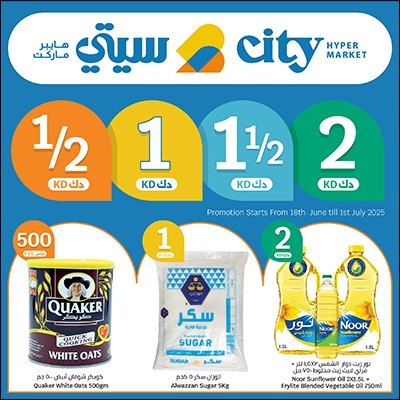Irregular loan coverage at Kuwaiti banks jumped by 312% in 2023
All local banks enjoyed safety in their conditions during the past year, both in terms of business growth, coverage of non-performing loans, and high capital adequacy rates

• Kuwaiti banks’ capital adequacy rose to 19.9% by 2023-end from 19.2% in Q4 2022
• The financial integrity of local banks reflect Kuwait’s strong banking system and asset quality, ensuring resilience against future challenges.
• The net profitability margin of banks, including both traditional and Islamic, holds steady at a strong 43.4%.
• In 2023, the net profit of Kuwaiti banks reached an all-time high of 1.57 billion dinars—a 30% rise from the previous year’s 1.21 billion dinars.
In 2023, Kuwaiti banks saw their net profit reach an all-time high, totaling 1.57 billion dinars—a 30% increase from the previous year’s 1.21 billion dinars. Additionally, these banks distributed 1.03 billion dinars in cash and grants.
Recent data from the Central Bank of Kuwait indicates significant improvements in the financial integrity indicators of local banks by the end of 2023, showcasing substantial advancements across various metrics. Kuwaiti banks’ robust indicators position them well to navigate crises, a testament to their proactive measures and strategic procedures.
Continued growth of banking sector
Financial indicators show that all local banks enjoyed safety in their conditions during the past year, both in terms of business growth, coverage of non-performing loans, and high capital adequacy rates. This is thanks to the continued growth of the sector and the expansion of its banking units.
Capital adequacy standard
The capital adequacy standard for the Kuwaiti banking sector according to the Basel 3 standard reached 19.9% by the end of 2023, up from the 19.2% level recorded at the end of the fourth quarter of 2022. Meanwhile, the ratio of the first tranche of capital to the asset base was 88.4%, marking a decrease from the 88.8% level recorded by the end of 2022.
Ratio of irregular loans
At the end of the fourth quarter of 2023, the ratio of irregular loans to total loans remained at 1.4%, matching the historically lowest levels recorded at the end of 2022. Additionally, the ratio of net regular loans to net loans reached 0.9%.
The coverage rate of irregular loans was 311.9% (more than three times), marking the highest historical levels in the local banking sector. This reflects the volume of adequate, large, and reassuring allocations made by local banks.
The coverage of irregular loans includes both general and specific allocations, serving as a strong indicator for banks due to local conservation efforts and prudent risk management. This is achieved through broader and more comprehensive audits and the careful selection of customers. Meanwhile, the regulatory liquidity rate reached 22.7%.
The ratio of net irregular loans (non-regular loans minus specific allocations) to net total loans (total loans minus specific allocations) is approximately 0.9%, which is also the lowest in the banking sector. Additionally, the ratio of shareholders’ equity to total assets stands at 13.4%.
Remarkable stability
The banking sector has consistently maintained an acceptable net interest margin, which stands at 2.7%. This ratio has demonstrated remarkable stability since the second quarter of the previous year.
The net profitability margin of banks, both traditional and Islamic, which is the ratio of net profit to net interest income and non-interest income, remains at a good level of 43.4%. However, it experienced a decline from 44.4% in the second and third quarters to the end of the fourth quarter last year.
Core activities
Kuwaiti banks are still focusing on their core activities, such as lending and banking operations. The ratio of core income (net interest income + net fee income) to operating income (net interest income + non-interest income) gradually increased to 81.6% by the end of 2023.
The ratio of operating expenses (interest expenses + non-interest expenses) to total revenues (interest income + non-interest income) reached its highest level in recent years, hitting 70.1%.
Meanwhile, the net interest margin stood at about 2.7%, representing the ratio of net interest income to average interest-bearing assets (AEA). These assets include term deposits with the Central Bank, deposits with banks and other financial institutions, investments in government bonds, investments in fixed-income securities, and net loans.
Non-interest expenses
The ratio of non-interest expenses to average assets at the end of 2023 was 1.4%, while the return on average assets was 1.5%, and the return on average equity was 11.1%.
Overall, the indicators of financial integrity of the banks reflect the strength and robustness of the Kuwaiti banking system, as well as the quality of its assets. These indicators demonstrate its ability to overcome any future crises or challenges. For instance, the coverage rate of irregular loans is one of the highest globally, and the capital adequacy ratio surpasses the requirements set by the Central Bank of Kuwait. These facts underscore the banking system’s strength, its capability in achieving financial inclusion, and the effectiveness of financial mediation.
Kuwait’s official reserve assets reached 14.62 billion dinars
Kuwait’s official reserve assets reached 14.62 billion dinars by the end of the fourth quarter of 2023. Kuwait’s reserve assets are distributed as follows: Gold, valued at 31.7 million dinars based on the book value at the time of purchase, along with Kuwait’s reserve with the International Monetary Fund (IMF), amounting to 228.7 million dinars.
The special drawing rights totaled 1.32 billion dinars, serving as international reserve assets created by the IMF to complement member countries’ reserve assets. The fund allocates special drawing rights among its members based on their shares in the Fund.
Foreign currency
Furthermore, the balance of foreign currency and deposits abroad reached 13 billion dinars, primarily consisting of paper and mineral money traded from foreign currencies and used for payments (excluding commemorative coins).
The deposits within reserve assets are held with foreign central banks, the Bank for International Settlements, and other banks, and these deposits are available upon request. Additionally, the balance of securities abroad reached 51.5 million dinars.
Deposits from public institutions reached 6.7 billion dinars
Deposits from public institutions reached their highest level in 2023, totaling 6.7 billion dinars. These deposits are categorized into financial on-demand deposits amounting to 96.8 million dinars and term deposits of 4.77 billion dinars, as well as non-financial on-call deposits valued at 528 million dinars and term deposits totaling 1.35 billion dinars.
Government deposits in the banking sector reached 4.6 billion dinars, consisting of on-call deposits worth 427.7 million dinars and term deposits worth 4.15 billion dinars.
Private sector deposits as of December 2023 totaled approximately 37.3 billion dinars. These deposits are distributed as follows: 9 billion dinars in on-call deposits, 5.8 billion dinars in savings deposits, and around 20.6 billion dinars in term deposits. Additionally, deposits in foreign currencies amounted to 1.8 billion dinars.














